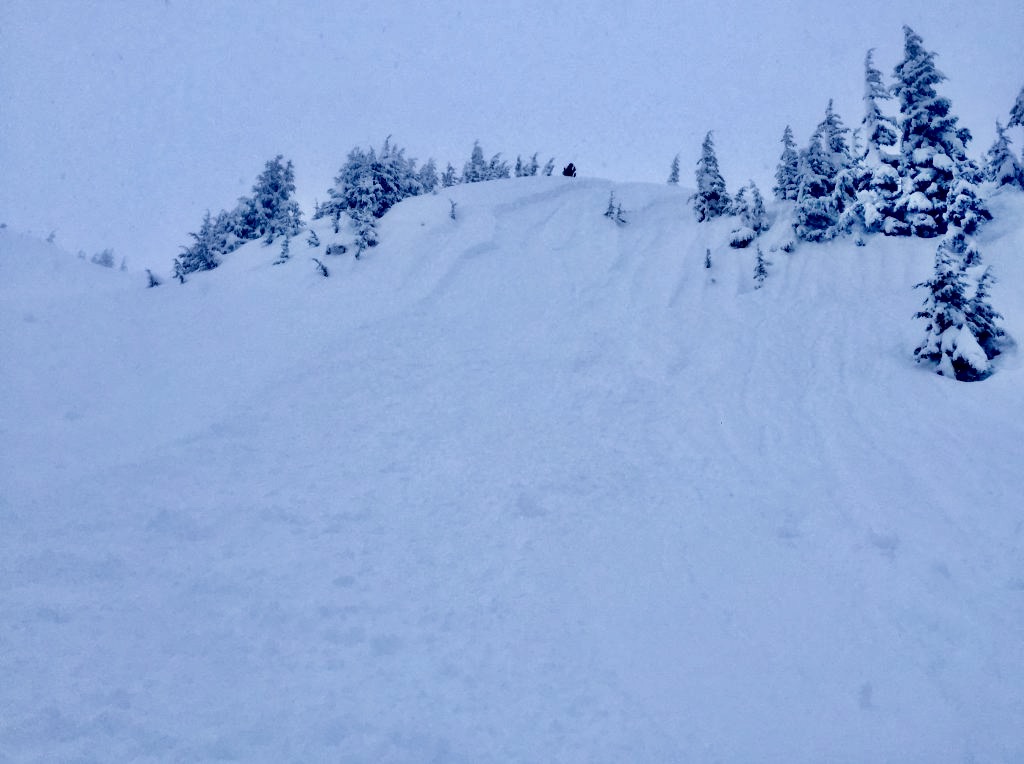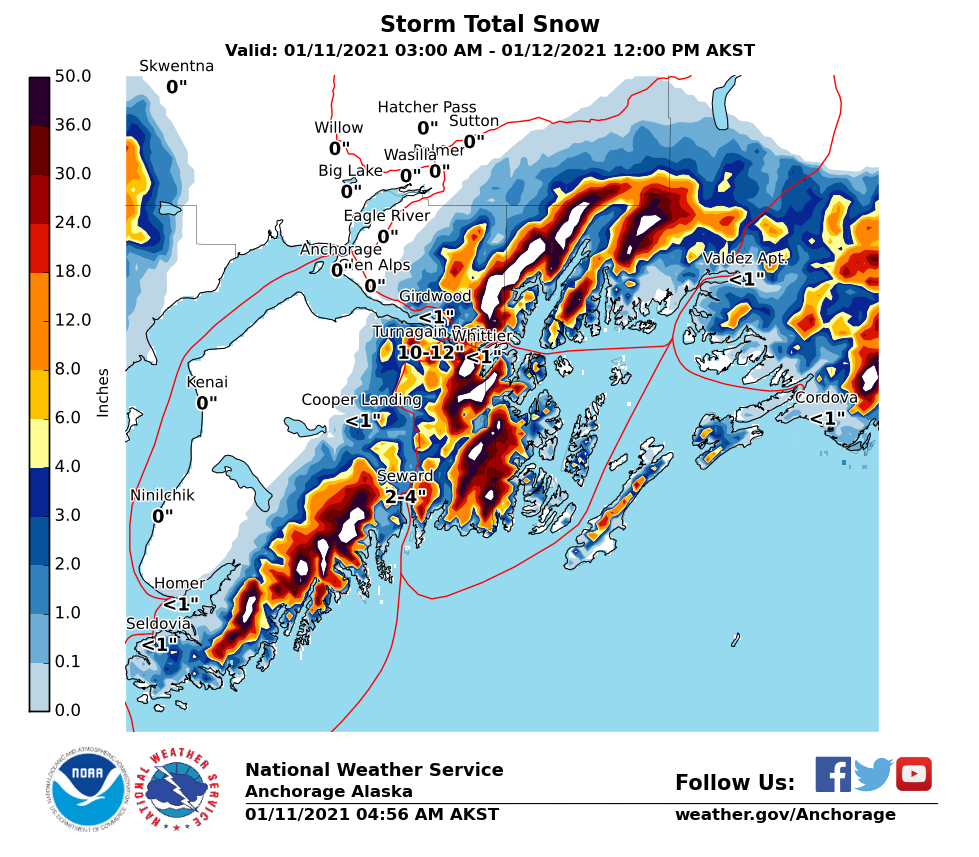Turnagain Pass
|
|
Avalanche Warning
Issued: January 11, 2021 6:00 amTravel in avalanche terrain is not recommended. Avoid being on or beneath all steep slopes. |
We have extended the Backcountry Avalanche Warning through the National Weather Service today. With heavy snowfall, rain, and strong winds the avalanche danger remains HIGH in the mountains surrounding Turnagain Pass, Girdwood Valley, Portage Valley, and areas on the Kenai including Summit Lake and the Seward/Lost Lake zone. Dangerous avalanche conditions are expected on all slopes 30° and steeper – including runout zones. Large avalanches are expected to release naturally, be easily triggered by people and send debris to valley floors. Travel in and below avalanche terrain is NOT recommended. Areas with steep slopes above should be avoided, such as the Byron Glacier Trail and the Seattle Ridge Uptrack. Even small terrain features could act as deadly terrain traps.
The National Weather Service has issued a Special Weather Statement with this storm.
- From the Alaska Department of Transportation: There will be intermittent traffic delays Monday, January 11, 2021 on the Seward Highway for Avalanche Hazard Reduction work. From mileposts 90 to 100 on the Seward Highway, between Girdwood and Bird. Motorists should expect delays of up to 45 minutes between 11:00 AM and 4:00 PM. Updates will be posted on the 511 system. http://511.alaska.gov/
- Forecaster chat #3 will be Saturday, Jan 16 from 6:00-7:30 p.m. Join CNFAIC forecasters Andrew Schauer and Wendy Wagner, along with special guest Karl Birkeland from the National Avalanche Center, as we talk about how we put together an avalanche forecast, and how we put the forecast to use while we are in the mountains.


